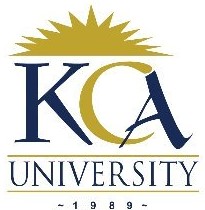
UNIVERSITY EXAMINATIONS: 2014/2015
ORDINARY EXAMINATION FOR THE BACHELOR OF SCIENCE
IN INFORMATION TECHNOLOGY
BIT 3107 WIRELESS NETWORKS TECHNOLOGIES
DATE: DECEMBER, 2014 TIME: 2 HOURS
INSTRUCTIONS: Answer Question ONE and any other TWO
QUESTION ONE: 30 MARKS – COMPULSORY
(a) List and briefly discuss any four (4) application areas of micro-sensor networks.
[8Marks]
(b) Outline any four (4) differences between Mobile Ad-Hoc Networks (MANETs)
and Wireless Sensor Networks (WSNs). [4 Marks]
(c) What is the difference between Coverage Area and Foot print as they relate to
satellite communication? [3 Marks]
(d) With the aid of relevant diagrams using the bit stream provided, describe the
following:
1 1 0 1 1 0 0 1 1 0 1
a) Amplitude Shift Keying (ASK) [2 Marks]
b) Frequency Shift Keying (FSK) [2 Marks]
c) Phase Shift Keying (PSK) [2 Marks]
(e) Encode the bit stream provided in (d) above using the following encoding
schemes:
a) Non-Return to Zero Inverted [2 Marks]
b) Bipolar AMI [2 Marks]
c) Differential Manchester [2 Marks]
(f) There are at least two (2) problems that affect conventional wireless
communications. These are catastrophic interference and constant-frequency
signal interception. Briefly discuss these problems. [3 Marks]
QUESTION TWO: 20 MARKS
(a) An antenna is defined as an electrical conductor or system of conductors that are
used for transmitting and receiving electromagnetic energy. Briefly discuss the
three (3) main types of antennas. [6 Marks]
(b)(i) What is the difference between Nyquist theorem and Shannon formula for
computing channel capacity? [4 Marks]
(ii) The spectrum of the channel is between 1 MHz and 4 MHz. The SNR for this
channel is 63. What are the appropriate bit rate and signal elements?
[4Marks]
(c) What determines how successful a receiver will be in interpreting an incoming
signal? Briefly explain. [6 Marks]
QUESTION THREE: 20 MARKS
(a)(i) Why is there an apparent shift from Infrared to Bluetooth in wireless networking?
[2 Marks]
(ii) List and briefly describe at least four (4) prevalent applications of Bluetooth.
[8Marks]
(b) What can be gained from apparent waste of spectrum?
[6Marks]
(c) Differentiate between intermodulation noise and impulse noise. [4 Marks]
QUESTION FOUR: 20 MARKS
(a) Fixed-assignment multiple access (FAMA) and Demand-assignment multiple
access (DAMA) are two forms of FDMA. Briefly explain them. [6 Marks]
(b) “Frequency borrowing”, “Cell splitting” and “Cell sectoring” are approaches
used in cellular wireless networks to cope with increasing capacity demand for a
cell. Explain these approaches. [6 Marks]
(c) Briefly discuss the design considerations in cordless and wireless local loop
telecommunications. [6 Marks]
(d) What makes it difficult to jam signals transmitted in a spread spectrum technique?
[2 Marks]
QUESTION FIVE: 20 MARKS
(a)(i) What do you understand with the term “error”? [1 Mark]
(ii) Describe the error detection process. [4 Marks]
(b) “Throughput”, “Number of nodes” and “Connection to backbone LAN” are
some of the requirements of Wireless LAN. Briefly discuss them. [6 Marks]
(c) Explain at least three (3) benefits which result from migration from analog to
digital transmission. [6 Marks]
(d) Why is multiplexing widely used in Wireless Networks? [3 Marks]
